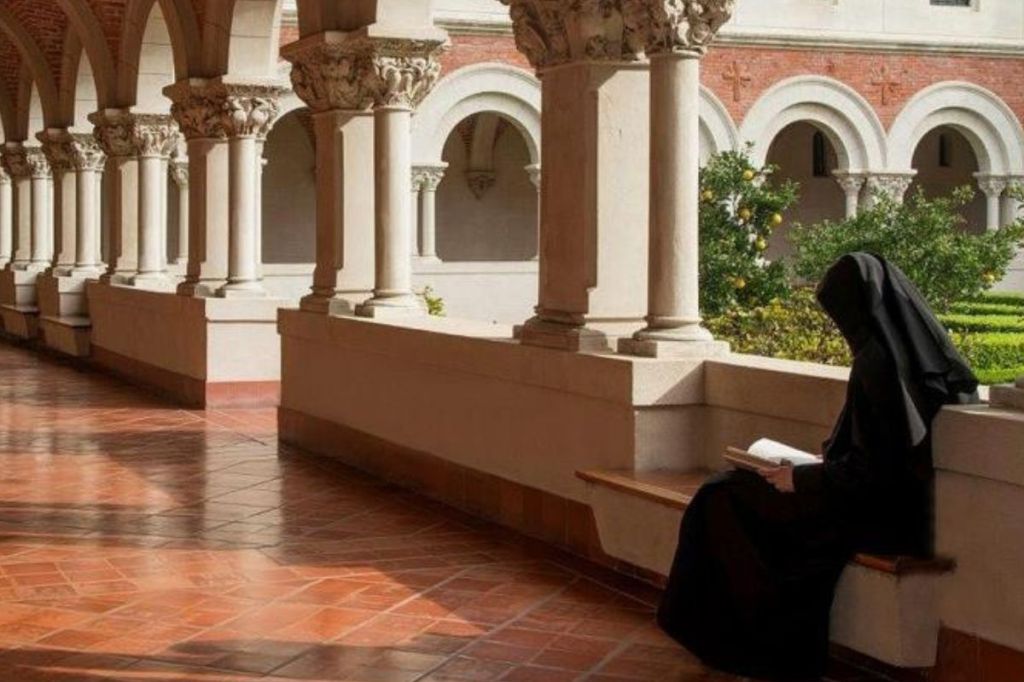The Benedictine nuns chosen to take over the Mater Ecclesiae (“Mother of the Church”) Monastery, established by St. John Paul II to support the Holy Father in his ministry, have arrived.
Late last year, the Vatican announced that the monastery, which was used by Pope Emeritus Benedict XVI during his retirement, would have new residents, taking up again the mission that John Paul II had established for it.
The women religious who live in the monastery support the Successor of Peter and the Curia through a ministry of prayer, adoration, praise, and reparation, thus being “a prayerful presence in silence and solitude,” as the Holy See explains in the official communiqué.
Six nuns from the Benedictine Abbey of St. Scholastica, province of Buenos Aires (Diocese of San Isidro) in Argentina, arrived on January 3. Pope Francis had invited them in a handwritten letter dated October 1, 2023, and the nuns “generously accepted the invitation.”
The president of the Vatican Governorate, Cardinal Fernando Vérgez Alzaga, went to Fiumicino Airport at dawn to welcome them. As established by the pope, the Governorate is responsible for all matters concerning Mater Ecclesiae.
As soon as they arrived to their new convent, the nuns went to the Lourdes Grotto in the Vatican Gardens for song and prayer before the statue of Our Lady, an identical copy of the image venerated at Massabielle.
From Argentina to the Vatican
The home abbey of the nuns is well known for the richness of its liturgies, which are open to the community, and for offering talks on various topics of spirituality. As well, it is known for its gastronomic delights. In these ways, the sisters go to the peripheries of the Church without leaving the walls of their monastery. In the process, they earn the respect and affection of the surrounding neighborhoods and cities.
The nuns in Argentina are known for the products they make and sell to support themselves. Those who have tasted their chocolate eggs or pastries don’t want to live another Easter or Holy Week without them! Evidence of this are the long lines at the abbey to get one of these classic treats.
In gratia cantantes

The Abbey of St. Scholastica in Victoria, north of the city of Buenos Aires, was born from the initiative of the Benedictine monks, who at the beginning of the 20th century already had a monastery in Buenos Aires. “In gratia cantantes” was the motto under which they received the first nuns, from Brazil and Argentina, on September 16, 1941.
Their monastery, beautifully decorated, is reminiscent of the monastery of Silos. The complex bears many details that the community of monks, the heirs of St. Benedict, prepared for the heirs of their founder’s sister, St. Scholastica.
Special recipes

Different traditions have arisen around the nuns and their culinary productions in Victoria. For example, people order the most beautiful and heartfelt wedding favors from them, knowing the prayer and commitment of those who make them. The nuns also provide liturgical vestments. But undoubtedly, the products that reach most beyond the bounds of the Church are their pastries.
Among their delicacies are their alfajores — cookie sandwiches filled with dulce de leche or jam — and their cookies and chocolates. They also decorate the treats according to the season. Those who taste them describe as having something special they can’t nail down.
The exact recipes are a secret. However, the nuns once acknowledged part of their formula. In one of the few interviews they gave, some years ago, one of them told the Clarín, a newspaper, that when they work they try to make it so that “everyone who receives a product from the nuns receives the goodness and beauty of God’s love through material things.”
Cardinal Pironio

The Benedictine nuns of Victoria are answering the Vatican’s call at a time of jubilation for the community, composed of more than 20 nuns. Cardinal Eduardo Francisco Pironio, an Argentinean Cardinal who served the Church for several years at the Holy See and used to visit the nuns assiduously when he was in Argentina, has just been beatified.
In fact, upon his death in 1998, Cardinal Pironio bequeathed to the Community his personal library, together with documents and writings archived in the Cardinal Pironio Center, works that enrich their already extensive collection.
The Vatican monastery
St. John Paul II inaugurated the Mater Ecclesiae monastery on May 13, 1994. In accordance with its statutes, after its foundation it housed for successive periods of five years different religious families of the Church dedicated to contemplative life.
From 1994 to 1999 it housed Poor Clare nuns; from 1999 to 2004, Discalced Carmelite nuns; from 2004 to 2009, Benedictine nuns; and from 2009 to November 2012, consecrated nuns of the Order of the Visitation of St. Mary.
Benedict XVI went there with his personal secretary and four consecrated women of Memores Domini of Communion and Liberation who accompanied him in his retirement. These lay women consecrate themselves to common life, and live by a rule of silence, personal and community prayer, poverty, obedience, and fraternal charity.



